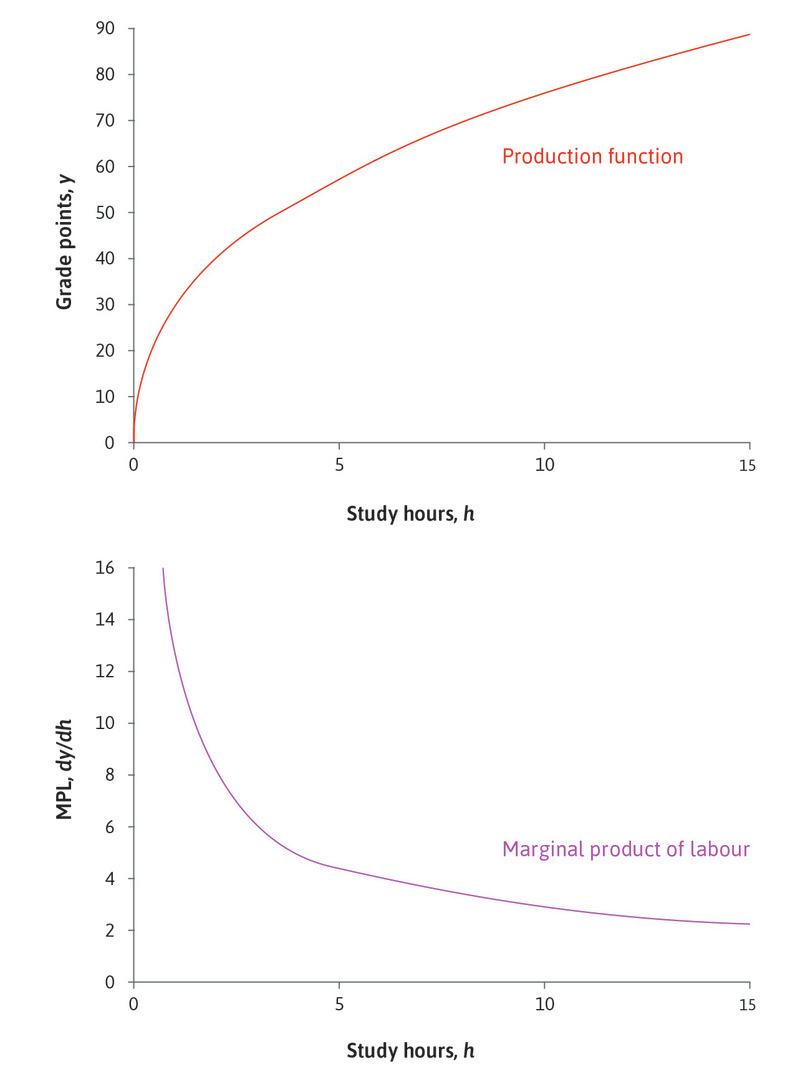Leibniz
3.1.2 Diminishing marginal productivity
Alexei’s production function has the property of diminishing marginal productivity. We can see it graphically: the graph gets flatter as the hours of study per day increase. What does this mean for the mathematical properties of the production function?
If the production function is , the marginal product of labour is , so the marginal product of labour diminishes as increases if:
or equivalently:
That is, the second derivative of the production function is negative.
An example
Consider again the production function:
where and are constants such that and . We showed in Leibniz 3.1.1 that, for this production function
which is positive as long as the hours of study are positive. What we want to show next is that as hours increase, this marginal product becomes smaller and smaller.
One way to see it is to focus on the expression
is raised to the power , which is negative, because . Recall from the property of negative exponents that as increases, decreases, and since and are positive, so does , the marginal product of labour.
Alternatively we can show that the marginal product is decreasing by differentiating it:
When is positive, we know that is positive too. Then when , , and so:
This is what we wanted to show: the second derivative of the production function is negative, so the marginal product falls as increases. In other words, the marginal product of labour is diminishing.
In Leibniz 3.1.1 we showed that when , the marginal product is less than the average product. This property is closely related to the concept of diminishing marginal product: if the marginal product of a production function is diminishing for all values of the input, then it is also true that the marginal product is less than the average product (MPL < APL).
Figure 2 shows the graph of the production function for the case where and , together with the graph of the marginal product of labour. For each value of , the upper graph shows the value of , and the lower graph shows the slope of the production function, . You can see that the marginal product of labour decreases with .
Read more: Sections 6.4 and 8.4 of Pemberton and Rau (2016).

